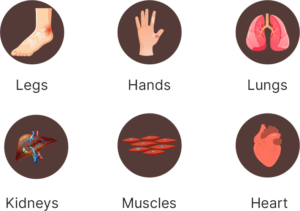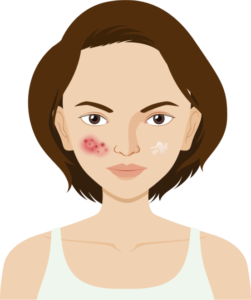Systemic Sclerosis / Scleroderma
 Systemic sclerosis or Scleroderma is an autoimmune condition affecting the skin. The characteristic feature is hardened skin with induration, with the term “Scleros” meaning hard skin in Greek. Though skin is the most involved organ, this condition also affects muscles, lungs, kidneys and heart.
Systemic sclerosis or Scleroderma is an autoimmune condition affecting the skin. The characteristic feature is hardened skin with induration, with the term “Scleros” meaning hard skin in Greek. Though skin is the most involved organ, this condition also affects muscles, lungs, kidneys and heart.
Though the exact mechanism of the disease is not understood, it is thought that the immune break down which is triggered through various factors leads to excess collagen production. This collagen deposits in various organs like skin causing hard skin or lesions in blood vessels. Exposure to certain elements like Silica dust or solvents was thought to trigger the immune breakdown.
 Women are affected more and the age of onset is around 30 to 50 years. Symptoms starting at an earlier age or rapidly developing symptoms indicate a more severe disease. Though men can develop this condition, the severity and complications are less compared to women.
Women are affected more and the age of onset is around 30 to 50 years. Symptoms starting at an earlier age or rapidly developing symptoms indicate a more severe disease. Though men can develop this condition, the severity and complications are less compared to women.
Symptoms include skin changes like hardening of skin with loss of skin pigment and inability to bend the joints of the hands and bluish white discoloration of the fingers when exposed to cold known as Raynaud’s. Swallowing difficulty can be present as the mouth aperture might be reduced and this is called microstomia. When Raynaud's is not well controlled digital ulcers can be formed which can cause infections. Complications of the lungs are common and might require long term treatment. Heart and the Esophagus are also involved in some patients.
Diagnosis is made by detailed history, examination and blood tests. Evaluation for complications can be done such as CT and X ray of the chest, Esophageal dysmotility test and echocardiogram. Treatment can be varied based on the patients presentation and the organs involved. Treatment can be long term and in case of complications might require multiple specialist treatment.
